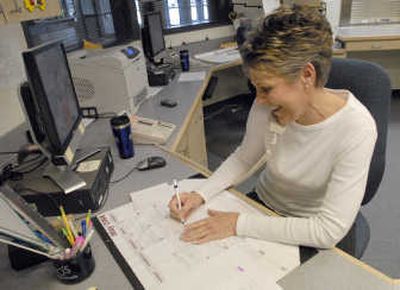EV makes second try at bond

Voters have a second chance to pass a $33 million bond to pay for school improvements in the East Valley School District.
The measure drew 55.44 percent approval during March’s special election, short of the 60 percent supermajority required. Organizers have brought it back on the May 20 ballot, hoping it will draw a little more interest this time.
“We need it to pass,” said Superintendent Debra Howard. “(The buildings) are not going to heal themselves. The bond is critical to maintaining our facilities.”
The district heard from some people that just assumed it would pass and didn’t vote, Howard said, and others thought that the measure only required a 50 percent approval. Still, Howard is heartened that the bond did receive 55 percent approval. “Given all of the conflict we had last spring with our financial situation, I believe the percentage yes vote we received in the bond really was a vote of confidence.”
The bond would pay for complete modernizations of Mountain View Middle School, East Valley Middle School and Otis Orchards Elementary. It would also pay for technology, communications and security systems upgrades at all the elementary schools. The district is also eligible for $22.7 million in matching funds from the state.
The cost of the bond will be $1.40 per $1,000 in assessed home value, 10 cents less than the current bond. The new bond would not take effect until after the current bond expires.
“This is a great deal with the state match,” Howard said. “It’s good timing with the other bond retiring.”
The schools all face aging systems that have not been renovated or upgraded since the schools were built. The schools are not up to current code, lacking things like sprinkler systems that weren’t required when the buildings were constructed. Mountain View Middle School was built in 1978 and East Valley Middle School was built in 1968.
The heating and ventilation systems at East Valley Middle School are antiquated and have numerous problems. One hallway vent has been repaired with duct tape. Other rooms that need ventilation don’t have it, including the closets converted to server rooms. One such closet near the school office has an interior door left open at all times, but the room is still hot enough on a cool day to be compared to a sauna. “It just burns this stuff up and it’s expensive,” said Principal Mark Purvine.
The roof, which hasn’t been replaced in 40 years, has constant leaks. At soon as existing leaks are patched, new ones spring up in their place. Just two weeks ago Purvine had a leak next to his desk. In the past there were leaks in a hallway directly above the lighting fixtures. “We’re not talking about a little bit of water,” Purvine said. The leaks damage the ceiling tiles and the custodian has taken to buying $7 replacement tiles by the box.
The electrical wiring, which never anticipated personal computers, is so maxed out in some parts of the school that the addition of only one more item causes an overload. The classrooms don’t have a large number of outlets, limiting where teachers can put computers. Storage closets are crammed into classrooms corners to store supplies. “We’ve got these little closets all over the place,” Purvine said.
The school is in bad repair simply because things are worn out, he said. “There’s not much left to glue to.”
The modernization would essentially gut the school, replacing drafty windows, plumbing, electrical wiring and the heating and cooling systems. The school would not be expanded or receive much in the way of exterior changes. “We’re not looking at structural changes, but certainly we’re hoping for some fresh paint,” he said. “We are in bad repair, but we don’t need to build new. We have a salvageable building that has serious issues.”
Those issues take time and resources away from the school’s mission of educating children, Purvine said. “Our kids are at a disadvantage. We’ve got great kids. Our kids deserve a quality education.”
Howard said a study done in 1996 found that students in substandard buildings scored 11 percentage points lower than students housed in above-standard buildings. “Our facilities really can make a difference for our students,” she said.